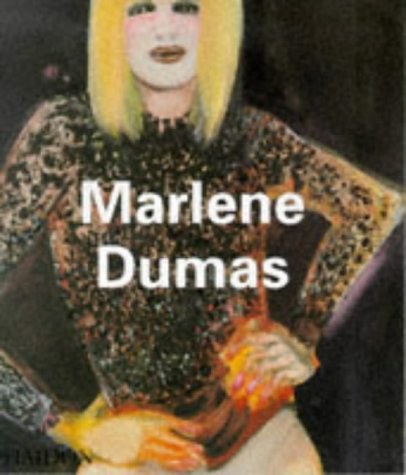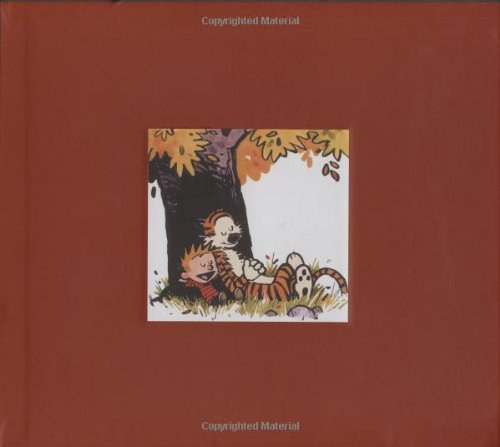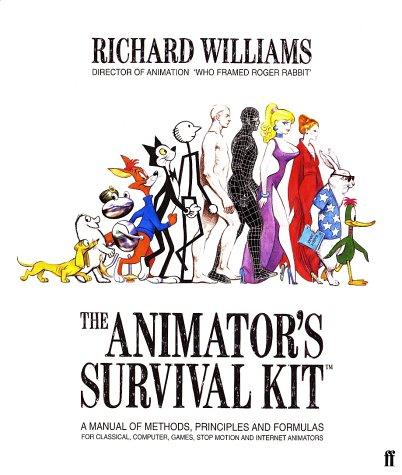
交互式计算机图形学基于OPENGL的自顶向下方法(第5版)英文版
书刊介绍
交互式计算机图形学基于OPENGL的自顶向下方法(第5版)英文版 内容简介
简介在广泛结合opengl并注重图形应用编程的基础上,本书向读者介绍了计算机图形学的核心概念。书中代码采用c和c++语言,并使用了自顶向下和面向编程的方法,使读者能够迅速地创建自己的三维图形。在结构安排上,本书在读者学会了编写交互式图形程序之后再介绍底层的算法,如线段的绘制以及多边形填充等算法。本书覆盖了计算机图形学基础课程中的所有主题,包括光与材质的相互作用、明暗绘制、建模、曲线和曲面、反走样、光栅化、纹理映射和图像合成等内容。本书可作为计算机及相关专业本科生和研究生的计算机图形学教材,也适合作为相关程序员、工程技术人员及科研人员的参考书。
交互式计算机图形学基于OPENGL的自顶向下方法(第5版)英文版 本书特色
《交互式计算机图形学——基于OpenGL的自顶向下方法》可作为计算机及相关专业本科生和研究生的计算机图形学教材,也适合作为相关程序员、工程技术人员及科研人员的参考书。
交互式计算机图形学基于OPENGL的自顶向下方法(第5版)英文版 目录
CHAPTER1 GRAPHICS SYSTEMS AND MODELS1.1Applications of Computer Graphics1.1.1 Display of Information 1.1.2 Design1.1.3 Simulation and Animation 1.1.4 User Interfaces1.2 A Graphics System1.2.1 Pixels and the Frame Buffer1.2.2 Output Devices1.2.3 Input Devices1.3 Images: Physical and Synthetic1.3.1 Objects and Viewers1.3.2 Light and Images1.3.3 Image Formation Models1.4Imaging Systems1.4.1 The Pinhole Camera 1.4.2 The Human Visual System 1.5 The Synthetic-Camera Model1.6 The Programmer's Interface1.6.1 The Pen-Plotter Model 1.6.2 Three-Dimensional APIs1.6.3 A Sequence of Images1.6.4 The Modeling-Rendering Paradigm1.7 Graphics Architectures1.7.1 Display Processors1.7.2 Pipeline Architectures 1.7.3 The Graphics Pipeline 1.7.4 Vertex Processing 1.7.5 Clipping and Primitive Assembly1.7.6 Rasterization 1.7.7 Fragment Processing1.8Programmable Pipelines1.9Performance Characteristics Summary and Notes Suggested Readings ExercisesCHAPTER2 GRAPHICS PROGRAMMING 2.1The Sierpinski Gasket 2.2Programming Two-Dimensional Applications 2.2.1 Coordinate Systems 2.3 The OpenGL API 2.3.1Graphics Functions 2.3.2 The Graphics Pipeline and State Machines 2.3.3 The OpenGL Interface 2.4Primitives and Attributes 2.4.1 Polygon Basics2.4.2 Polygon Types in OpenGL 2,4.3 Approximatin9 a Sphere2.4.4 Text 2.4.5 Curved Objects 2.4.6 Attributes 2.5Color 2.5.1RGB Color2.5.2 Indexed Color2.5.3 Setting of Color Attributes 2.6Viewing 2.6.1 The Orthographic View 2.6.2 Two-Dimensional Viewing2.6.3 Matrix Modes2.7Control Functions 2.7.1 Interaction with the Window System 2.7.2 Aspect Ratio and Viewports2.7.3 The main, display, and myinit Functions2.7.4 Program Structure 2.8The Gasket Program 2.9Polygons and Recursion2.1 0 The Three.Dimensional Gasket2.1 O.1Use of Three Dimensional Points2.1 0.2Use Of Polygons in Three Dimensions 2.10.3 Hidden—Surface Removal 2.1 1 Plotting Implicit Functions2.1 1.1Marching Squares Summary and NotesSuggested Readings ExercisesCHAPTER3 INPUT AND INTERACTION3.1Interaction3.2Input Devices3.2.1 Physical Input Devices 3.2.2 Logical Devices3.2 3Input Modes3.3Clients and Servers3.4 Display Lists3.4.1 Definition and Execution of Display Lists3.4.2 Text and Display Lists3.4.3Fonts in GLUT3.5 Display Lists and Modeling3.6 Programming Event Driven Input3.6.1Using the Pointing Device3.6.2Window Events3.6.3Keyboard Events 3.6.4 The Display and Idle Callbacks3.6.SWindow Management3.7Menus3.8 Picking3.8.1 Picking and Selection Mode3.9A Simple CAD Program3.10Building Interactive Models3.11Animating Interactive Programs3.11.1 The Rotating Square3.11.2 Double Buffering3.11.3 Using a Timer3.12 Design of Interactive Programs3.12.1 Toolkits.Widgets.and the Frame Buffer3.13 Logic Operations3.13.1 Drawing Erasable Lines3.13.2 XOR and Color3.13.3Cursors and Overlay PlanesSummary and NotesSuggested Readings ExercisesCHAPTER4 GEOMTRIC OBJECTS AND TRANSFORMATIONS 4.1Scalars,Points.and Vectors4.1.1Geometric Objects4.1.2Coordinate.Free Geometry4.1.3The Mathematical View:Vector and Affine Spaces4.1.4 The Computer Science View4.1.5GeometricADTs4.1.6 Lines4.1.7Affjne Sums 4.1.8Convexity4.1.9 Dot and Cross Products4.2 Three-DimensionaI Primitives4.3Coordinate Systems and Frames4.3.1Representations and N.Tuples4.3.2Change of Coordinate Systems 4.3.3Example Change of Representation4.3.4 Homogeneous Coordinates4.3.5Example Change in Frames4.3.6Working with Representations4.4Frames in 0penGL4.5Modeling a Colored Cube4.5.1Modeling the Faces4.5.2Inward-and Outward.Pointing Faces4.5.3 Data Structures for Object Representation4.5.4 The Color Cube 4.5.5Bilinear Interpolation4.5.6Vertex Arrays4.6Affine Transformations4.7 Translation,Rotation-and Scaling4.7.1Translation 4.7.2RotationCHAPTER 5 VIEWINGCHAPTER 6 LIGHTING AND SHADINGCHAPTER 7 FROM VERTICES TO FRAGMENTSCHAPTER 8 DISCRETE TECHNIQUESCHAPTER 9 PROGRAMMABLE SHADERS交互式计算机图形学基于OPENGL的自顶向下方法(第5版)英文版 节选
在广泛结合OpenGL并注重图形应用编程的基础上,《交互式计算机图形学——基于OpenGL的自顶向下方法》向读者介绍了计算机图形学的核心概念。书中代码采用C和C++语言,并使用了自顶向下和面向编程的方法,使读者能够迅速地创建自己的三维图形。在结构安排上,《交互式计算机图形学——基于OpenGL的自顶向下方法》在读者学会了编写交互式图形程序之后再介绍底层的算法,如线段的绘制以及多边形填充等算法。《交互式计算机图形学——基于OpenGL的自顶向下方法》覆盖了计算机图形学基础课程中的所有主题,包括光与材质的相互作用、明暗绘制、建模、曲线和曲面、反走样、光栅化、纹理映射和图像合成等内容。
交互式计算机图形学基于OPENGL的自顶向下方法(第5版)英文版 作者简介
Edward Angel,美国新墨西哥大学计算机科学系、电气与计算机工程系以及媒体艺术系荣誉退休教授,他曾经是该大学首位兼任教学工作的研究生。Edward获得了美国南加州大学获得哲学博士学位和加州理工学院工程理学士学位。他还是新墨西哥大学艺术、研究、技术和科学实验室(http://artslab.unm.edu)的主任。
相关推荐
-
![[英] 王薇《新概念编程C语言篇习题解答》](http://oss.shudanhao.com/caiji/chazidian/2023/132872.jpg)
[英] 王薇《新概念编程C语言篇习题解答》
《新概念编程C语言篇习题解答》对《新概念编程C语言篇》教材中的习题进行了系统全面的分析和解答。习题精选了C语言编程中典型题型
-

云梯:从新人到达人的职场进化论
《云梯:从新人到达人的职场进化论》内容简介:本书从分析当今人们的学习、工作、生活现状开始,逐步引导读者更好地进行自我管理和
-

Visual Basic程序设计实验教程
VisualBasic程序设计实验教程 本书特色 吴昊编著的《Visual Basic程序设计实验教程》是《Visual Basic程序设计》配套的实验教材,帮...
-

保险这样买就对了
《保险这样买就对了》内容简介:本书从实际中常见的保险问题出发,为读者提供解决保险问题的答案,让读者避开买保险过程中的麻烦。
-

河南社会治理发展报告(2017)
《河南社会治理发展报告(2017)》内容简介:本书从社会安全、矛盾化解、社会组织、公共服务、社会公平五个维度,对河南省社会治理
-

姚宏宇|田溯宁《云计算》
《云计算:大数据时代的系统工程》主要讲述了,在互联网带来的“大”问题压力下,我们需要全新的思想,通过“积木化”的改变,来重
-

并行程序设计(第2版)
并行程序设计(第2版) 本书特色 本书系统介绍并行程序设计原理及应用。除介绍常用的一些算法范例,包括分治、流水、同步计算、主从及工作池,还介绍了一些常用的经典数...
-

地理信息系统数据库-第二版
地理信息系统数据库-第二版 本书特色 《地理信息系统数据库(第2版)》详细论述了地理信息系统数据库的基本理论、技术方法、实践应用、*新理论与发展趋势。内容全面、...
-

Arduino创意机器人入门
《Arduino创意机器人入门》内容简介:机器人教育融机械、传感与控制等内容为一体,让学生在手脑并用解决实际问题的过程中,有效地提
-

霍尔马《HSDPA/HSUPA技术与系统设计》
本书内容包括:HSPA标准的研究进展和未来发展蓝图;HSPA对无线网络的影响、协议结构以及网元的功能和接口,并给出了无线资源控制
-

像我这样的一个读者
《像我这样的一个读者》内容简介:独一无二的经典文学作品阅读指南,世界华文文学奖得主西西的私人书单。打开这本无限之书,你可以
-
![[美] 威廉·W·费舍尔《说话算数》](http://oss.shudanhao.com/caiji/chazidian/2023/4402.jpg)
[美] 威廉·W·费舍尔《说话算数》
哈佛大学法学院教授,哈佛大学伯克曼“互联网与社会”中心主任。美国马萨诸塞州安赫斯特大学学士(美国研究)、哈佛大学J.D.和美
-

金蔷薇
《金蔷薇》内容简介:《金蔷薇》是一部总结作者本人创作经验、研究俄罗斯和世界上许多文学大师的创作活动、探讨文学创作的过程、方
-

全国专业技术人员计算机应用能力考试考前冲刺EXCEL 2003中文版电子表格
全国专业技术人员计算机应用能力考试考前冲刺EXCEL 2003中文版电子表格 本书特色 《全国专业技术人员计算机应用能力考试考前冲刺:Excel 2003中文电...
-

史蒂芬.李維《Google總部大揭密》
∣如果有一天,Google的搜尋引擎突然故障∣GMAIL信件全數消失∣GoogleMaps、GoogleDocs、Google行事曆等所有雲端服務全面停擺∣我
-

机器学习-实用案例解析
机器学习-实用案例解析 本书特色 《机器学习:实用案例解析》是机器学习和数据挖掘领域的经典图书,基础理论与实践完美的结合,是一部逻辑紧密、内容详实,适合所有相关...
-

《Biological Sequence Analysis》书籍《Biological Sequence Analysis》
Probabilisticmodelsarebecomingincreasinglyimportantinanalysingthehugeamountofdat...
-
![[美] John G·Proakis《数字通信》](http://oss.shudanhao.com/caiji/chazidian/2023/540.jpg)
[美] John G·Proakis《数字通信》
本书是数字通信领域的一本经典教材,通过对概率论及随机过程的复习,详细介绍了数字和模拟信源编码、数字调制信号和窄带信号与系
-

华中科技大学数学系《复变函数与积分变换学习辅导与习题全解》
《复变函数与积分变换学习辅导与习题全解(华中科大•2版)》是与《复变函数与积分变换》(第二版)(华中科技大学数学系编)配套的学习
-

STM32开发实战:LabVIEW卷
《STM32开发实战:LabVIEW卷》内容简介:作为学习LabVIEW与32位微处理器STM32的入门级教材,本书从LabVIEWforARM嵌入式软件架构入...





